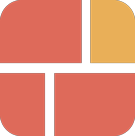Get Started: Difference between revisions
mNo edit summary |
mNo edit summary |
||
| Line 14: | Line 14: | ||
Select the option that best fits your goal: | Select the option that best fits your goal: | ||
===== Template for Multiple pages ===== | |||
{{Note|Creating a template assigned to multiple pages at once is handy when you want to customize templates for a group of items like Men clothing, Cushions, Rugs, etc.| reminder}} | |||
Create a new template - assigned to multiple pages at once: [[Create Template For Multiple Pages|Read setup guide]]. | |||
===== Template for Single page ===== | ===== Template for Single page ===== | ||
| Line 25: | Line 30: | ||
<youtube width="960" height="540">ze_UE0uVto4</youtube> | <youtube width="960" height="540">ze_UE0uVto4</youtube> | ||
===== Template for Standard pages ===== | ===== Template for Standard pages ===== | ||
Revision as of 07:23, 20 September 2023
The basics
Easy Content Builder templates are a collection of sections that can be added to your existing (OS2.0) themes. Once you add a premade template Easy Content Builder provides, you can add your images and copy to fit your brand. You can easily edit, reorder, or remove any section within that template to create your ideal page.
Templates can be assigned to individual product/blog post/page or multiple product/blog post/pages at once.
Premade templates are great for:
- Get familiar with how pages and sections are built using Easy Content Builder.
- Editable templates are great for saving time to tailor your theme and keeping consistency between your page types.
Adding your first template
Select the option that best fits your goal:
Template for Multiple pages
Create a new template - assigned to multiple pages at once: Read setup guide.
Template for Single page
Create a new template - assigned to a single page: Read setup guide.
Quickstart:
Watch this overview video to learn how to build a new template and assign it to an individual page using Easy Content Builder.
Template for Standard pages
Customize your standard pages (Homepage, Collection, etc.): Read setup guide.
Preview your custom template
Steps to preview your products, blog posts or pages with the new custom template:
- From your Shopify admin, click Online Store > Themes.
- Find the theme that you want to edit, and then click Customize.
- Open the dropdown menu at the top of the page.
- Use the dropdown menu to select a template.
- In the sidebar, click Change.
- Select the product or page you want to preview with the selected template.
Next steps
- Manage your templates: follow these steps.
- Edit your template: follow these steps.
- Learn how to set up multi-column layouts:
- 1-col boxed layout
- 1-col with Background Image
- 2-col with Flexible Col Width
- 2-col with Blank Sections
- Hierarchical Grids (6 layout options)
- We suggest you install the Theme Section Kit to customize your Shopify theme faster. This template contains prebuilt sections (Free and Pro versions) that you can edit, reorder, or hide through your Theme Editor. Preview the Theme Section Kit here.
- Learn how to customize your Shopify themes with Custom CSS using Easy Content Builder: 5-min video tutorial.
Jump in a little deeper
If you would rather want to learn more about the fundamentals of the Easy Content Builder app:
- Read to understand Clean Template and Pre-built ECB Templates.
Use cases
Browse the pre-built template collections - Product pages, Landing pages, Brand pages, etc. - for inspiration.
- Grid & Layouts:
- How to create multi-column layouts: view details
- Hero Banners examples: view demo
- How to create a Hero banner: view details
